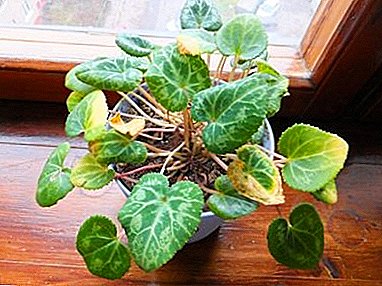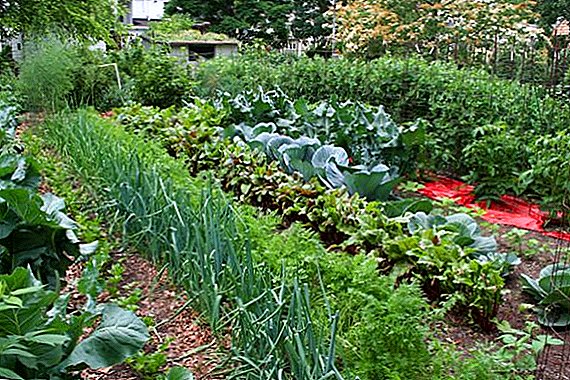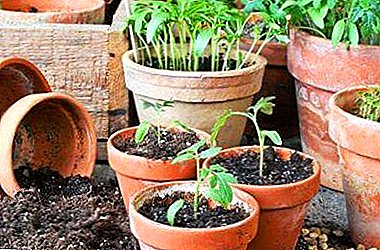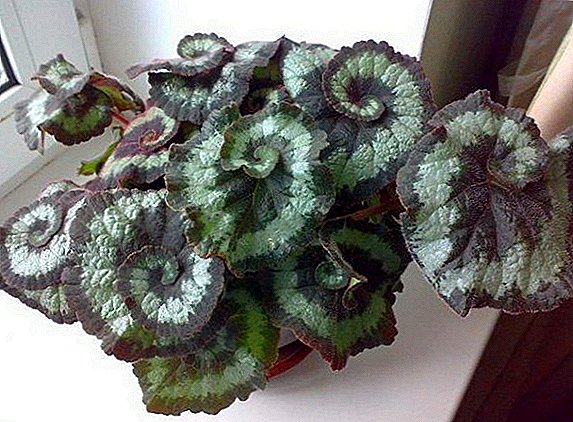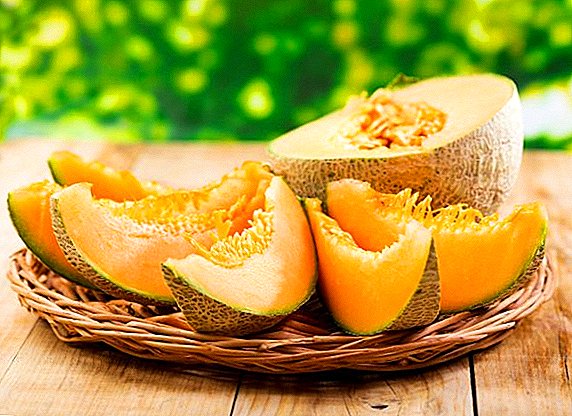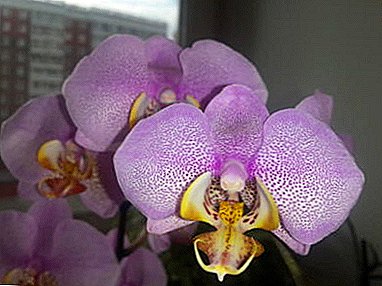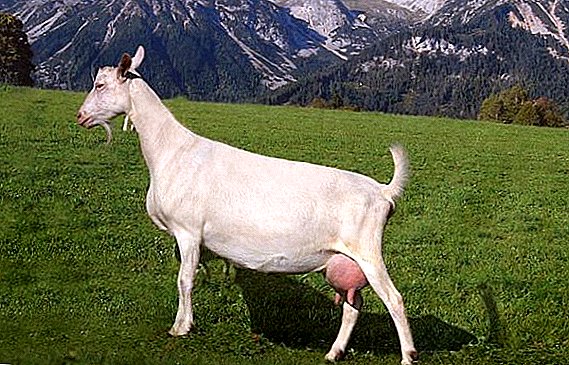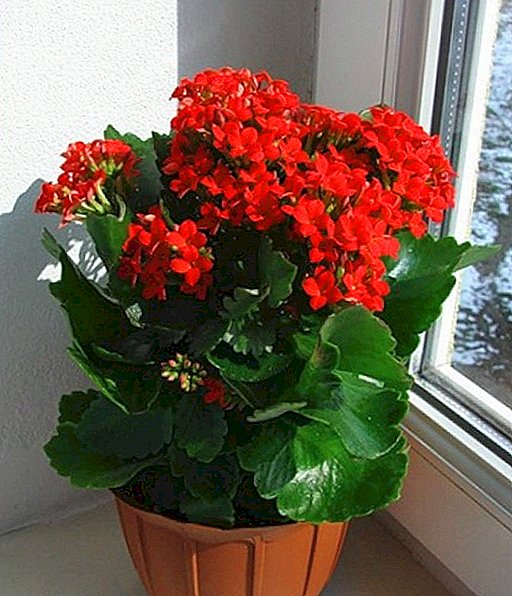 Some types of Kalanchoe are quite popular indoor plants. Breeders have deduced from them various hybrids, characterized by high decorative effect. Among the new species, Kalanchoe Don Sergio (Sergio) looks quite interesting, featuring a long flowering and unpretentiousness. Let's take a closer look at how to keep this flower at home.
Some types of Kalanchoe are quite popular indoor plants. Breeders have deduced from them various hybrids, characterized by high decorative effect. Among the new species, Kalanchoe Don Sergio (Sergio) looks quite interesting, featuring a long flowering and unpretentiousness. Let's take a closer look at how to keep this flower at home.
What is this houseplant
A variety of Don Sergio, like the entire Kalanchoe genus, is a member of the Tolstiankov family. This is a hybrid bred by Kalanchoe Kalandiva breeders, which, in turn, is a type of terry Kalanchoe Blossfeld.
In the wild, Kalanchoe Blossfeld grows in Madagascar, and for the first time a German botanist who collects succulents gave his description in 1934. Don Sergio is an exclusively decorative flower, it is not used for medicinal purposes.
Beautiful juicy greens of this succulent, spectacular, rather large terry inflorescences of orange shade are of interest from fans of indoor plants. Moreover, it, like all Kalanchoe, is unpretentious and easy to reproduce.
Succulents also include such plants as Sedum, Hoya, Pachypodium, Rhipsalis, Euphorbia, Mesembryanthum, Staphelia, Mammily, Echeveria, Lithops, Hatiora, Haworthia, Agave, Nolin.

How to choose when buying
Before buying a decorative Kalanchoe like Don Sergio, you need to carefully examine it and follow some rules:
- It is best to buy this houseplant at the beginning of winter, because then it only begins to bloom and will bloom for a long time;
- you need to choose a plant with a large number of unblown buds, the presence of many faded buds indicates the proximity of the dormant period, at which this flower will no longer look so presentable, it also indicates a careless seller, because removing faded flowers could make the flowering period longer;
- leaves must be free from damage, stains or plaque - this may indicate a disease;
- Be sure to examine the lower part of the leaves, as this is a favorite place for aphids and shchitovki;
- Kalanchoe should be of a compact size, the plant should not be elongated and have openings on the stem.

Did you know? This kind of Kalanchoe pinnate is used in traditional medicine for the treatment of varicose veins, edema during pregnancy, cough, bronchitis, otitis, furuncles, acne, for the prevention of colds and flu, in order to increase the immune system resistance, etc. The healing also is Kalanchoe Daygremont.
Place to adapt in the house
For Kalanchoe, Don Sergio, windows to the west or east are best suited, as this plant likes good lighting, but too hot direct sunlight can burn its leaves.
Therefore, on the south windows it should be slightly shaved with thin light-colored paper or a curtain that transmits light. On the windowsills facing north, it can also grow, but the lack of light will slow down its development and flowering. 
How to transplant after purchase
After purchasing Kalanchoe, Don Sergio is recommended to transplant it to ensure more acceptable growth conditions.
Before landing it is necessary to make the following actions:
- thoroughly wash the dishes in which you plan to plant a flower;
- pick up a pot for planting a couple of centimeters more than the previous one;
- to ensure good drainage so that there is no stagnation of the liquid in the soil; keramzite or gravel is ideal for this purpose, their amount should be approximately from 20 to 30% of the pot volume.
Suitable primer for succulents can be purchased at any flower or agro shop. You can also prepare your own soil mix for planting. For this purpose, turf soil is taken (0.5%), leaf soil (0.2%), sand (1.5%), peat (1.5%) of the total soil taken.  Everything is thoroughly mixed and placed in a pot. To normalize the acidity of the soil, it is better to add crushed coal or wood ash. It is advisable to warm the earth in the oven to prevent the entry of various infections, fungi.
Everything is thoroughly mixed and placed in a pot. To normalize the acidity of the soil, it is better to add crushed coal or wood ash. It is advisable to warm the earth in the oven to prevent the entry of various infections, fungi.
The transplant process is as follows:
- Kalanchoe is well watered for safe removal from the pot for transplanting;
- make in a pre-prepared pot with drainage and soil a small knoll for positioning the roots of the plant in it;
- Carefully remove the Kalanchoe from the pot and carefully inspect the root system: if there are rotten roots available, remove them with scissors that are heated by fire;
- move the plant in a pot, placing the roots in a prepared hillock, and then scattering sprinkled with earth and tamped a little;
- Kalanchoe moderately watered and sprinkled the ground, leaving about 2.5-3 cm to the edge of the pot.
Video: Kalanchoe Transplant
Optimal conditions for growing in the house
In order for Kalanchoe Don Sergio to feel well and delight you with his beautiful flowering, he needs to create a comfortable environment.
Lighting
This plant needs a lot of light to feel good. In winter, when it lacks the sun, it should be artificially highlighted. It is desirable for this to use special fitolampy. But if they are not, normal LED or fluorescent ones will do. The direct rays of the sun do not affect Kalanchoe well.
Temperature
In summer, the recommended air temperature in the room should be within + 18-28 ° C. In winter, the temperature should be kept at + 16-18 ° C. In cold weather, on the windowsill where Kalanchoe stands, there should not be less than + 10-12 ° C.  During the heating period, do not put this flower too close to a hot battery, as excessive heat will negatively affect the plant. During this period, you should also make sure that when airing the room cold air from the street does not blew on it - avoid drafts and sudden changes in temperature. Ensure that the plant is not under the window in the winter and under the air conditioner in the summer.
During the heating period, do not put this flower too close to a hot battery, as excessive heat will negatively affect the plant. During this period, you should also make sure that when airing the room cold air from the street does not blew on it - avoid drafts and sudden changes in temperature. Ensure that the plant is not under the window in the winter and under the air conditioner in the summer.
How to care
Behind this flower, proper care should be taken to be able to see how it blooms again.
Do not forget about watering
Kalanchoe important to water properly. In a warm period, it should be moderately abundant. But in the autumn and winter watering is limited - it is enough to carry out once every two weeks.
Important! It should be noted that the plant normally tolerates a small drought and poorly - excessive moisture. Excess moisture provokes rotting roots, fungal diseases and the appearance of mold. After all, succulents, which include Kalanchoe, accumulate water in themselves and, as a rule, grow in arid areas.

After watering, it is recommended to drain the excess water flowing into the pan, and wipe the pan and bottom of the pot. Water the plant with watered or settled water at room temperature.
Wipe leaves from dust
Kalanchoe especially does not need spraying, but in summer it will not be superfluous. But experts wipe clean the leaves with a damp cloth from dust. Dust on plants disrupts gas exchange, impedes the flow of air, slows down the process of photosynthesis.
To wipe the leaves, it is recommended to use a soft-structured fabric or foam sponge. Wiping must be very carefully, gently rub, so as not to damage the plant. When this should be avoided abundant wetting of the leaves with water.
Top dressing
Kalanchoe Don Sergio does not require frequent fertilizing, but if the leaves begin to turn yellow and become lethargic, this may indicate a lack of nutrients. Plant nutrition can solve this problem. Fertilizers for succulents or flowering plants are well suited for this purpose.  In the cold period, when this flower is at rest, it can not be fertilized. But in a warm period, a small top dressing does not hurt. It should be noted that fertilizers must be taken an order of magnitude less than that indicated on the package.
In the cold period, when this flower is at rest, it can not be fertilized. But in a warm period, a small top dressing does not hurt. It should be noted that fertilizers must be taken an order of magnitude less than that indicated on the package.
The fertilizers are dissolved in warm water, allowed to cool to room temperature, and then the mixture is irrigated. It is quite enough to feed once a month.
We advise you to read about how to grow Kalanchoe Degremona, Blossfeld, Kalandiva and feathery Kalanchoe at home.
Do I need trimming
An important point in the care of Kalanchoe is the need for the implementation of pruning. It should be made after the plant has faded and begins to degenerate - the stems with the sprigs begin to stretch and wriggle a little, the lower leaves fall away.
Video: Kalanchoe pruning Usually this process takes place in the fall. In this case, do not be upset. Kalanchoe is cut almost to the ground level, and the pot is moved to a shady place. Watering should be carried out less frequently to eliminate the risk of decay and the appearance of various diseases.
After 14 days, new leaves appear, and by the onset of spring the plant will be ready for a new flowering. It is also necessary to remove all damaged, diseased leaves and shoots. In the summer, it is recommended to pinch the tops of the shoots to form the side branches.
Like Kalanchoe, useful indoor plants also include: aloe, chlorophytum, geranium, laurel, ficus, cactus, chrysanthemum, pelargonium and sansevieria.
How to extend the flowering period
Kalanchoe flowering happens only once a year. This process occurs at the end of winter or in early spring. In the absence of flowering, you need to check the plant for the presence of diseases.  With proper care, you can get re-bloom in the summer. First of all, you need to timely and properly carry out pruning plants. Flowering Kalanchoe lasts for one month.
With proper care, you can get re-bloom in the summer. First of all, you need to timely and properly carry out pruning plants. Flowering Kalanchoe lasts for one month.
In order for this wonderful plant to please the eye as long as possible with its flowers, the following conditions should be observed:
- provide good lighting (you can use artificial lighting with lamps);
- after finding Kalanchoe in the light for nine hours, move it to a dark place;
- make feeding at least once a month;
- cut flower stalks after they have bloomed;
- after the cessation of flowering, reduce the number of waterings and stop feeding, since in nature this plant starts dry during such a period.
Important! Although Kalanchoe likes good bright lighting, an excess of it can reduce flowering. Therefore, such a plant blooms well in early spring, when the light day is not as long as in summer.

Why can not bloom
It so happens that the Kalanchoe was not prone to any diseases, but still can not please their flowering.
This trouble can occur for the following reasons:
- improper care of the plant;
- lack of sunlight - for this reason, the shoots are stretched and the flower lacks the strength to form buds;
- being in the light for more than 12 hours during the day;
- Excessive fertilizer Kalanchoe - this is often the reason for the lack of flowering; in order to cope with such a problem, it is necessary to reduce the amount of fertilizers, it is important here not to stop their introduction, but to gradually reduce their amount.
You will probably be interested to read about what to do if the Kalanchoe does not bloom.
Reproduction by cuttings
Reproduction Kalanchoe occurs by grafting. As a cutting, it is better to choose a shoot in length of 8 cm with good, intact leaves.  The cuttings are carefully separated and allowed to dry for several hours. Then, in order for the cuttings to take root, they are placed in water or a prepared substrate.
The cuttings are carefully separated and allowed to dry for several hours. Then, in order for the cuttings to take root, they are placed in water or a prepared substrate.
Especially quickly this process occurs in the sand. After grafting in 6-7 months, you can expect flowering of this plant. But if reproduction is done by leaflets, then the flowering process will come only after a year.
Did you know? Officially registered more than two hundred species of Kalanchoe, growing in the tropics and in the south of Africa, in South America, in the south and southeast of Asia.
Video: Kalanchoe reproduction by cuttings
Frequent care errors
Unfortunately, some mistakes in the care of Kalanchoe can cause the appearance of a number of diseases, as well as lead to a loss of appearance aesthetics.
Learn more about the diseases and pests of Kalanchoe.
Therefore, when growing Kalanchoe, you should follow certain rules in order to avoid some mistakes in care:
- Watering the plant is desirable to carry out only separated water at room temperature. If you do not comply with this condition, the plant loses its good appearance and its flowering deteriorates.
- If at the height of flowering or in the spring the lower leaves begin to fly around, this indicates the absence of nutrients for Kalanchoe. It needs to be fed. But do not worry when the plant loses leaves in the fall - this is a natural process.
- The appearance of brown specks on the leaves, and with time their yellowing and shedding speak of getting burns. It should be noted that not always sunny. Look at the leaves: if the burns where the leaves touch the glass, this means that the plant has grown strongly.

- The leaves are covered with wet black spots, and then rot and fall away - this means that the Kalanchoe freezes and gets too much moisture. This is usually due to over-irrigation during the winter period, and if this process is observed in the summer, then all the fault is drafts.
- The appearance of powdery mildew. This phenomenon often occurs due to high humidity and dampness. If there is an excess of moisture in the house, then it is necessary to carry out frequent airing of the room and refrain from spraying.
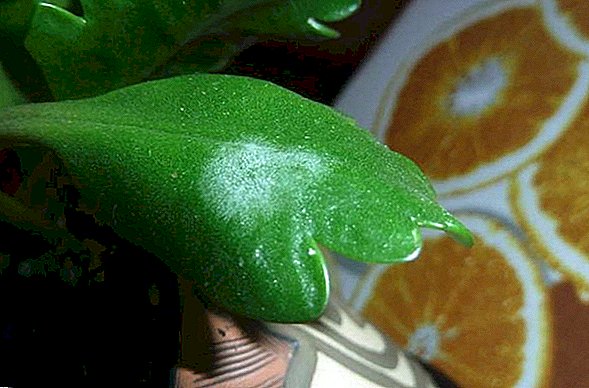
- The appearance of a gray plaque with watery specks is a sign of defeat by gray rot. It can also be provoked by cold and excess moisture. Often happens in the fall, when the cooling has come, and the heating season has not yet begun.
- The appearance of yellowish small patches, which gradually turn into dry spots of white color, indicates the appearance of ticks. You need to process fungicides not only the diseased plant, but also those that were nearby.
- If the leaves are deformed, become yellow and curl, this indicates the appearance of aphids. Special remedies or a solution of household soap help with such trouble.
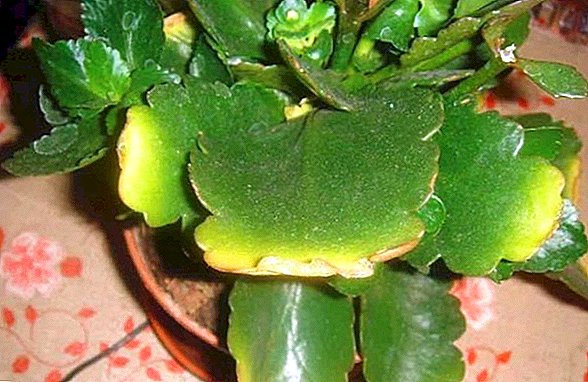
- From nearby plants, Kalanchoe can become infected with bacterial and viral diseases, which often manifest themselves as brown spots. In this case, the whole plant is treated with a fungicide, and the affected leaves are removed. Watering is reduced to a minimum, and spraying is stopped altogether.
Familiarize yourself with the features and rules of care for Kalanchoe at home.
By purchasing or receiving Don Sergio, a beautifully blossoming Kalanchoe, as a gift, you can enjoy its flowering every year, if you can provide optimal conditions for maintenance and care.
The main thing - it should not be too often and a lot of water. If you really like it, then you can multiply it by cuttings, and you will have more than one pot with this potted flower on the windowsill.
Reviews from the network








